We are so excited to be starting our six-week webinar series on Financial Leadership: Tips and Tools. We’ve coined it financial LEADERSHIP (and not the more-common description of financial management) to highlight the importance of having leaders integrate finance functions into the overall leadership of the organization. Finance isn’t just something our bookkeepers, accountants and CFOs manage, it is something that should be given due weight for all major programmatic and operational decisions that leaders (board and staff) make. This series is all about providing those leaders with some tools and resources to clarify an organization’s financial story and thoughtfully approach the financial aspect of running a nonprofit shop.
Our first week is on ratio analysis (doesn’t that sound exciting?!). And, while we may not get up each morning excited to calculate ratios, they really are the key to a good nonprofit dashboard to track how things are going in an organization.
Think of the dashboard in your car. First of all, it is full of ratios that provide meaning to how you should be driving and how your car is functioning (e.g. miles per hour, revolutions per minute). Without calculating those ratios, you would simply have a bunch of raw numbers that lacked context. A good nonprofit dashboard does the same thing. It provides meaning to how you should be driving the organization and how the organization is functioning – and it provides context.
Secondly, there are literally thousands of different things in your car that you could measure and display on your dashboard – different pressures, speeds, voltages, etc. But we have determined (appropriately) that most of those measures and ratios are not important for the day-to-day operations of the car. We’ve distilled our car dashboards down to just the essential few key performance indicators (KPIs) needed to effectively operate the vehicle.
Similarly, there are thousands of things in each of our organizations that we could decide to measure and report in a dashboard. But most of those items, while important at the right time and place, are not essential to the big picture leadership of the organization. Often, those items become distractions from that which our leaders should be focusing their attention. As a leader, I would much rather have my Board of Directors discussing items like days cash on hand instead of wanting to know why we spent $200 more on office supplies compared to last year. Your ratios and your dashboard focus the conversation on that which really matters for driving the organization.
Thirdly, in our car dashboard, we understand the context of each dashboard ratio and how different measures relate to one another. For example, we know that if we drive at 100 miles per hour for an hour straight, we will see a negative impact on other measures, like fuel efficiency. We learn to hold everything in balance to ensure we are getting where we need to go in the right amount of time with the right amount of resources (i.e. fuel).
A good operations dashboard provides the same type of context and understanding. By tracking KPIs over time, we begin to really understand the context of each measure and to see relationships emerge. We may begin to see how revenue volatility affects cash flow and asset position or how staffing costs impact profitability and operating reserves. And in doing so, we learn to make decisions that hold everything in balance and performing as optimally and efficiently as possible.
If you missed the webinar on ratio analysis, you can still purchase the recording and access the ratio analysis template.
Blog by,
Adam Jespersen, MBA | Director of Innovation
Montana Nonprofit Association

